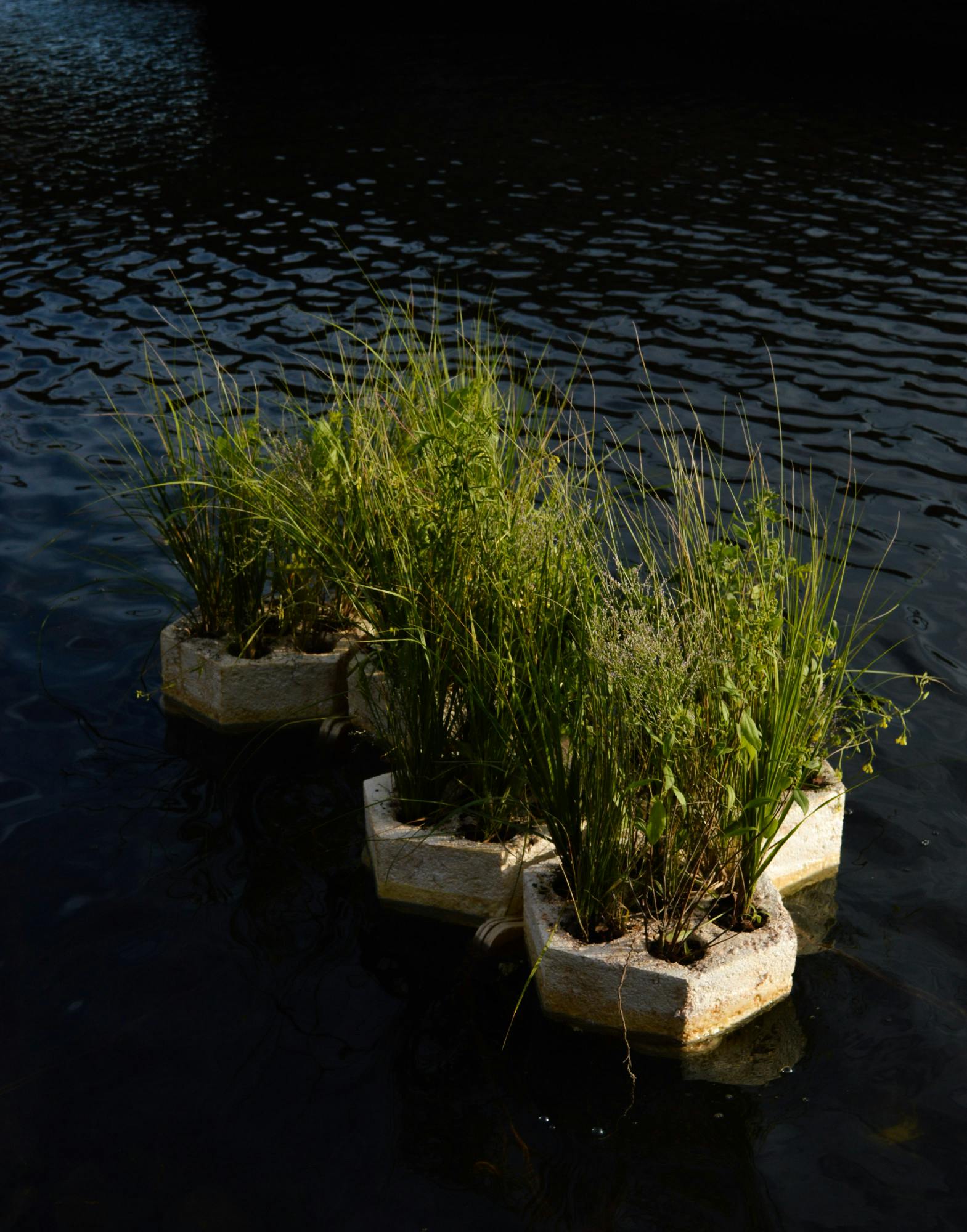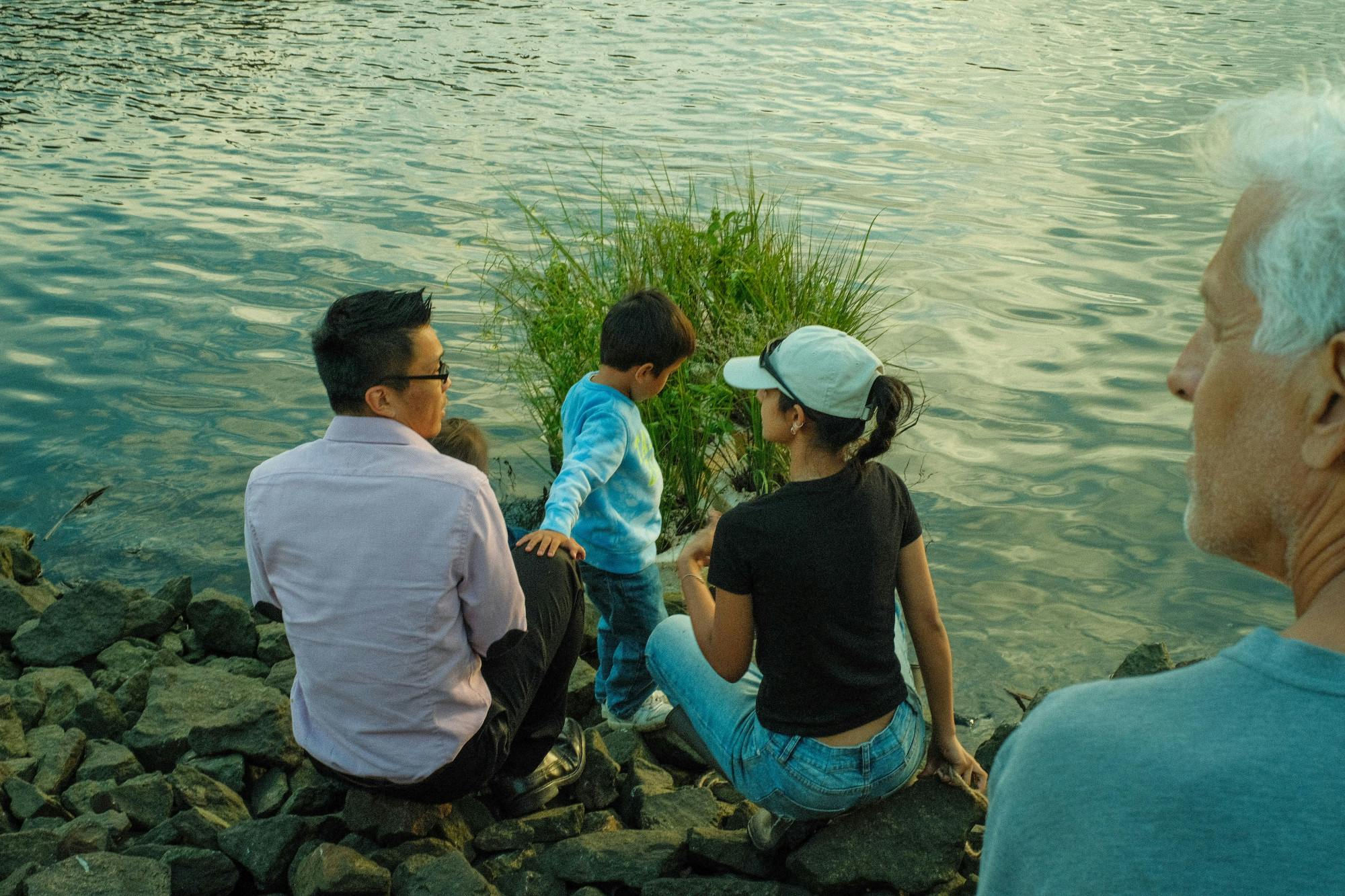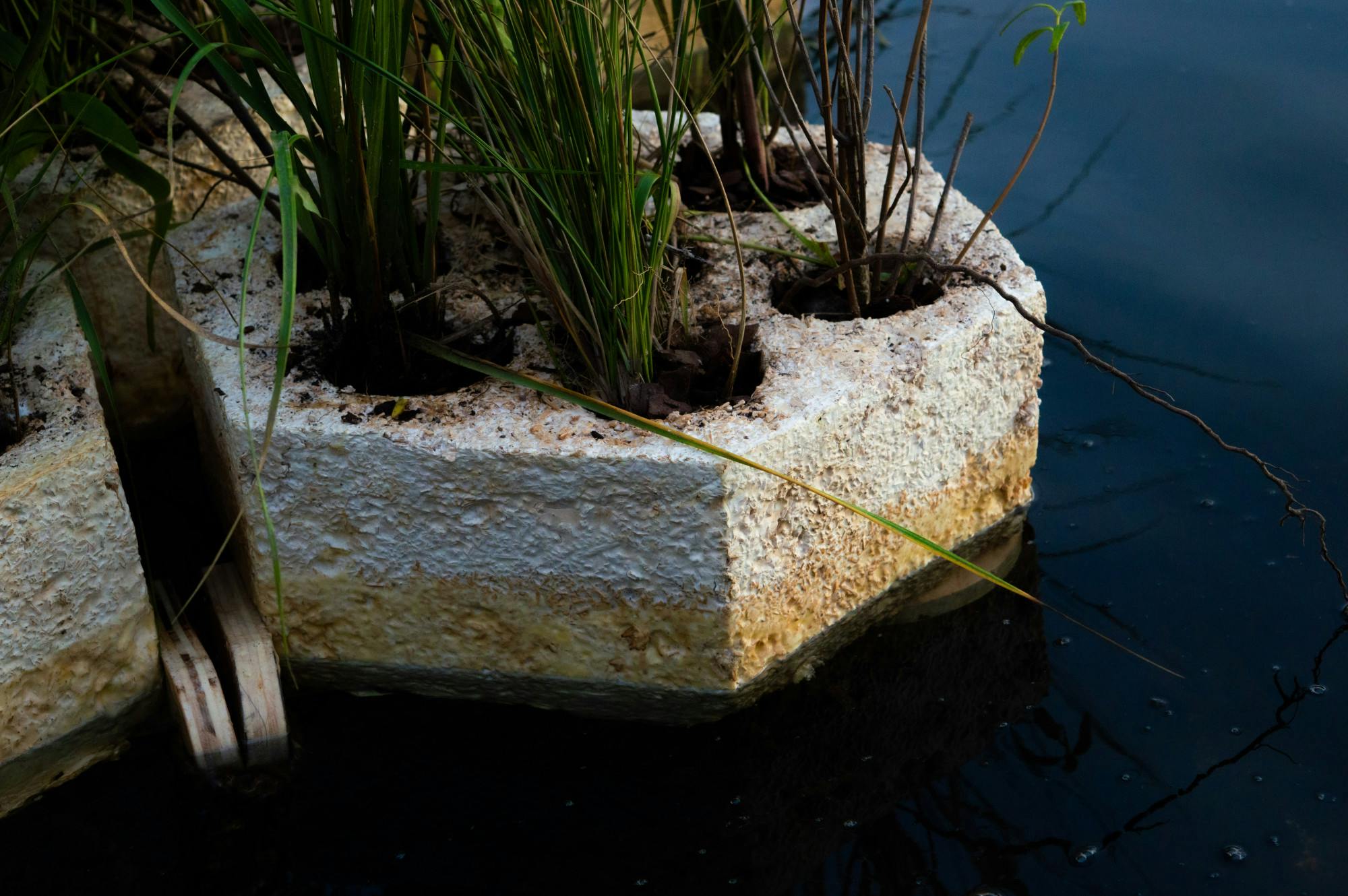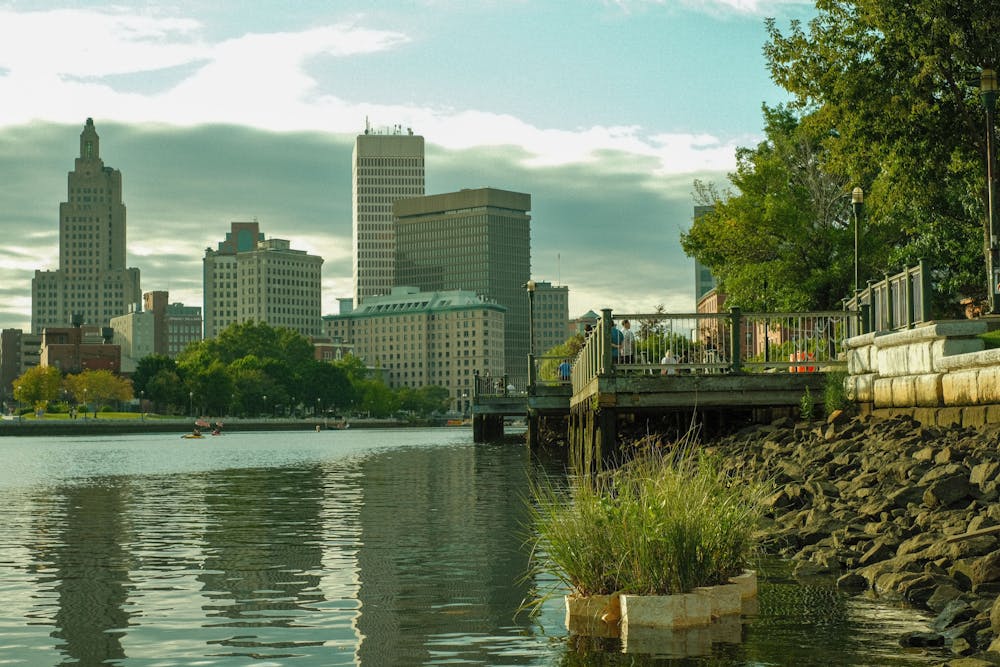Silently floating through the Providence River, a handful of BioPods are naturally working to reestablish a whole ecosystem. The modular, wedding-cake sized pods — built out of mycelium mushrooms and topped with native wetland plants — hide a series of holes, wax channels and root systems that support the growth of wetlands. Through this process, the RISD BioPods team hopes the river can begin to restore its ecosystem.
The Providence River and its entire watershed, “has been polluted over the course of many generations,” said Avantika Velho, one of the BioPod designers. Even though the river has become cleaner in recent years, Velho noted a “blank space” in Providence’s 2022 Environmental Stewardship Report: the lack of actions targeting polluted waters.
The BioPods, which naturally aggregate into fringe marshes, eventually degrade themselves, Velho explained. The roots, which dangle below the BioPods, feed from the polluted water and detoxify it in the process. “Really what you're doing is making a home within the BioPods for all of these bacteria life forms to thrive,” she said.
“Traditionally, the river has been purified with chemicals or more electricity-dominant” technologies, Velho added. “We’re trying to do this in a way that is regenerative and remediating.”

The BioPods team, made up of Velho, Manini Banerjee and Varun Mehta and Katia Zolotovsky, assistant professor of design at Northeastern University, RISD Research Affiliate and faculty lead of the grant project, was one of the inaugural recipients of the Somerson Sustainability Innovation Fund. The grant, created in 2022 by the Rhode Island School of Design, offers awards for student and faculty projects focused on the intersection between sustainability and design. In less than a year, the now-seniors and recent graduates have been able to prototype a low-cost system to purify waterways and empower communities.
Embarking on such a mission as designers was challenging, Mehta said. But the members’ professional backgrounds enabled them to focus on the community-facing aspects of the project.
“The value of approaching this from a design perspective rather than necessarily an explicitly scientific one … is that we're able to consider … who has control over this technology? How does it get distributed to people?” he added.
For Banerjee, it was important not only to get the science right, but to develop a product community members were excited to engage with. “When you look at (the BioPods), they feel human-scale as opposed to most other interventions (that are) larger-scale and don't really bring people into the biology (or allow them to understand) what's going into it,” she said.
The focus on community, combined with creative modes of research, is precisely the strength of a sustainability innovation fund dedicated to artists and designers, explained RISD Director of Research Soul Brown. While Soul Brown recognizes that many funds provide compensation for climate- and environment-focused projects, the RISD fund specifically centers creative solutions from artists and designers.
“They bring their own unique practices that researchers might not have familiarity with and therefore might not consider.”

Courtesy of Jenni Ugarte
For Soul Brown, the RISD BioPods project encapsulates many aspects of the SSIF mission. The project, she said, highlights that “nature can repair itself,” without help from “the artificial.”
The BioPods team partnered with several organizations both within and outside of RISD during the project’s development.
In an email to The Herald, Jennifer Bissonnette, interim director of RISD’s Nature Lab, wrote that the BioPods team worked closely with the lab to address a series of questions, specifically those involving the best plants to ensure restoration, how to sustainably harvest local plants and how to mimic the environmental conditions necessary for the growth of salt marshes.
For Bissonnette, it was important to support the RISD BioPods projects considering the ecological importance of wetlands and their disappearance.
Wetlands, Bissonnette explained, “purify and replenish groundwater reserves, stabilize shorelines and protect adjacent areas from storm and flooding events,” beyond storing and processing carbon dioxide.
“Projects such as these not only serve to bring some of that ecological function back to areas where it's critically needed, but also provide the opportunity for passersby to focus a bit on the living world we’re so deeply connected to and consider how we might work to regenerate” it, Bissonnette added.
On an April evening last year, the team collaborated with Providence’s WaterFire to collect community reactions to the BioPods. Banerjee recounted how their table at the event received many visits, ranging from environmental scientists ready to discuss the science behind the BioPods to small children who were attracted by their modular shape.
The experience, Mehta explained, is part of their user research, which is largely focused on how to engage and educate community members. “How can you make them understand why this is important, both to them, to the people around them and to the city they live in? Why is water health important?” he asked.
The next morning, the team gathered by the riverbank to launch the BioPods, joined by passersby. “I talked to some older people that remember the Providence River before it became this way,” Velho said. “They had a hope that it could be green again.”
“It was really refreshing to see how much the Providence community actually cared about this river,” she added.

Now, the team is pivoting their attention to developing workshops and even more accessible versions of the BioPods. A “cupcake version” of the BioPod, as described by Mehta, will be designed to boost affordability and accessibility — so “someone could build (it) with no background in design,” he said.
The team is also developing workshops that train citizens to build, fabricate and maintain the pods, while explaining why they are needed to clean the river, Velho explained. The team will test the workshops throughout the fall.
Velho hopes that the project can be expanded across New England and even globally, as they explore more funding opportunities. “Within the realm of this grant, it was enough to fund the initial research development and prototyping, but hopefully with all of these other engagements we can fundraise further,” she said.
As part of their fundraising efforts, the team will attend Rhode Island’s 2023 Stormwater Innovation Expo in October. The event “aims to empower industry professionals” by introducing attendees to “innovative products and funding opportunities,” wrote Stormwater Innovation Center Director Ryan Kopp in an email to The Herald.
RISD BioPods is working towards a new Providence River. “Even though the BioPod might not be the most efficient way of cleaning the water, … it’s a way to reintroduce the wetland biology to the river” while promoting community stewardship, Velho said. “It’s a holistic way of making the river healthier.”
Correction: This story was updated to reflect Katia Zolotovsky’s title and role for the project.

Julia Vaz was the managing editor of newsroom and vice president on The Herald's 134th Editorial Board. Previously, she covered environment and crime & justice as a Metro editor. A concentrator in political science and modern culture and media, she loves watching Twilight (as a comedy) and casually dropping the fact she is from Brazil.





